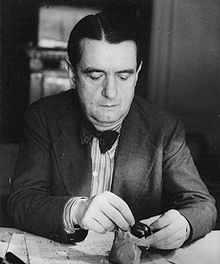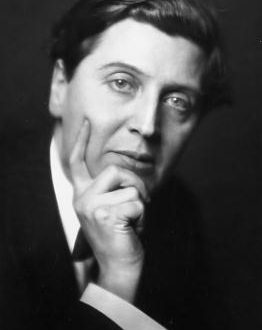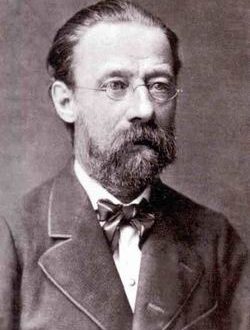
Georges Auric |
tirotiro
Georges Auric
Mema o te Institute of France (1962). I ako ia i te Montpellier Conservatory (piano), i muri i te Paris Conservatory (te akomanga o te counterpoint me te fugue me J. Cossade), i te wa ano i te 1914-16 - i te Schola Cantorum me V. d'Andy (akomanga tito) . I te 10 o ona tau ka timata ia ki te tito, i te 15 o ona tau ka timata ia hei kaitito (i te tau 1914, i mahia ana mahi aroha ki nga konohete a te National Musical Society).
I te tekau tau atu i 1920 no te ono. Pērā i ētehi atu mema o tēnei hononga, i aro nui a Orik ki ngā āhuatanga hou o te rau tau. Hei tauira, ka rongohia nga awe jazz i tana foxtrot "Farewell, New York" ("Adieu, New York", 1920). Ko te kaitito waiata (J. Cocteau i whakatapua te pukapuka Rooster me Harlequin, 1918 ki a ia) he pai ki te whare tapere me te whare waiata. I roto i te 20s. i tuhia e ia nga waiata mo te maha o nga mahi whakaari: Molière's Boring (i muri mai ka mahia ano hei peera), Beaumarchais's Marriage of Figaro, Ashar's Malbrook, Zimmer's Birds and Meunier i muri i a Aristophanes; “The Silent Woman” na Ashar raua ko Ben-Johnson me etahi atu.
I roto i enei tau, ka timata ia ki te mahi tahi me SP Diaghilev me tana roopu "Russian Ballet", nana i whakahaere te poipoi a Orik "Troublesome" (1924), me te tuhi motuhake mo ana poihe "Sailors" (1925), "Pastoral" (1926). ), “Pohewa” (1934). I te taenga mai o te whare pikitia oro, ko Orik, i haria e tenei toi papatipu, i tuhi waiata mo nga kiriata, tae atu ki te Blood of the Poet (1930), Freedom for Us (1932), Caesar and Cleopatra (1946), Beauty and the Beast “( 1946), "Orpheus" (1950).
He mema ia no te poari o te People's Musical Federation (mai i te tau 1935), i uru ki te kaupapa anti-fascist. I hangaia e ia etahi waiata papatipu, tae atu ki "Waiata, kotiro" (he waiata na L. Moussinac), he momo waiata mo nga taiohi French i nga tau i mua i te Pakanga Tuarua o te Ao. Mai i te mutunga o te 2s. He iti noa te tuhi a Orik. Mai i te 50, te Perehitini o te Hapori mo te Tiaki i nga Mana pupuri o nga Kaituhi me nga Kaituhi Waiata, i te 1954-1957 te Perehitini o nga Konohete Lamoureux, i te 60-1962 Kaiwhakahaere Matua o nga Whare Opera o te Motu (Grand Opera me Opera Comic).
He kaitoi tangata, ko Auric tetahi o nga tino kaitito waiata French o naianei. He mea whakarangatira ia na te nui o te koha waiata, he hiahia ki te whakakatakata me te whakakata. Ko nga waiata a Orik e whakaatu ana i te marama o te tauira waiata, te ngawari o te reo orooro. Ko ana mahi penei i nga Waiata e wha o te mamae o France (ki nga kupu a L. Aragon, J. Superville, P. Eluard, 1947), he hurihanga o nga whiti e 6 ki tera atu, e mau ana ki te pouri tangata. Eluara (1948). I roto i nga titonga a-rohe, ko te sonata piano whakaari F-dur (1931) e tu mai ana. Ko tetahi o ana mahi tino nui ko te poihe Phaedra (i runga i te tuhinga a Cocteau, 1950), i kiia e nga kai-whakapae a French "he aitua choreographic."
Ngā tito:
paoro – Hoha (Les facheux, 1924, Monte Carlo); Heramana (Les matelots, 1925, Paris), Pastoral (1926, ibid.), Charms of Alcina (Les enchantements d'Alcine 1929, ibid.), Rivalry (La concurrence, 1932, Monte Carlo), Pohewa (Les imaginaires, 1934) , ibid.), Te Kaitoi me tana Tauira (Le peintre et son modele, 1949, Paris), Phaedra (1950, Florence), Te Ara o te Marama (Le chemin de lumiere, 1952), Te Ruma (La chambre, 1955, Paris), Nga tahae poi (Le bal des voleurs, 1960, Nervi); mo orc. – overture (1938), suite from the ballet Phaedra (1950), symphony. suite (1960) me etahi atu; he huinga mo te kita me te puoro; ruma-instr. huinga huinga; mo fp. – preludes, sonata F-dur (1931), impromptu, 3 pastoral, Partita (mo te 2 fp., 1955); romances, waiata, waiata mo nga whakaari. whare tapere me te kiriata. Lit. cit.: Autobiography, in: Bruor J., L'écran des musiciens, P., [1930]; Notice sur la vie et les travaux de J. Ibert, P., 1963
Nga mahi tuhituhi: Autobiography, in: Bruyr J., L'écran des musiciens, P., (1930); Notice sur la vie et les travaux de J. Ibert, P., 1963
Tohutoro: Waiata hou French. “Ono”. Rāhoroi. Toi. I. Glebov, S. Ginzburg me D. Milo, L., 1926; Schneerson G., waiata Wīwī o te rautau XX, M., 1964, 1970; tana, E rua o nga "Ono", "MF", 1974, No 4; Kosacheva R., Georges Auric and his early ballets, “SM”, 1970, No 9; Landormy R., La musique française apris Débussy, (P., 1943); Rostand C, La musique française contemporaine, P., 1952, 1957; Jour-dan-Morhange J., Mes amis musiciens, P., (1955) (Rusia whakamaoritanga – E. Jourdan-Morhange, Ko oku hoa kaiwaiata, M., 1966); Golia A., G. Auric, P., (1); Dumesni1958 R., Histoire de la musique des origines a nos Jours, v. 1 – La première moitié du XXe sícle, P., 5 (Whakamaoritanga Ruhia o tetahi kongakonga mai i te mahi – R. Dumesnil, Nga Kaitito Wīwī Hou o te Rōpū Ono , L., 1960); Poulenc F., Moi et mes amis, P.-Gen., (1964) (Rusia whakamaoritanga – Poulenc R., ahau me oku hoa, L., 1963).
IA Medvedeva





